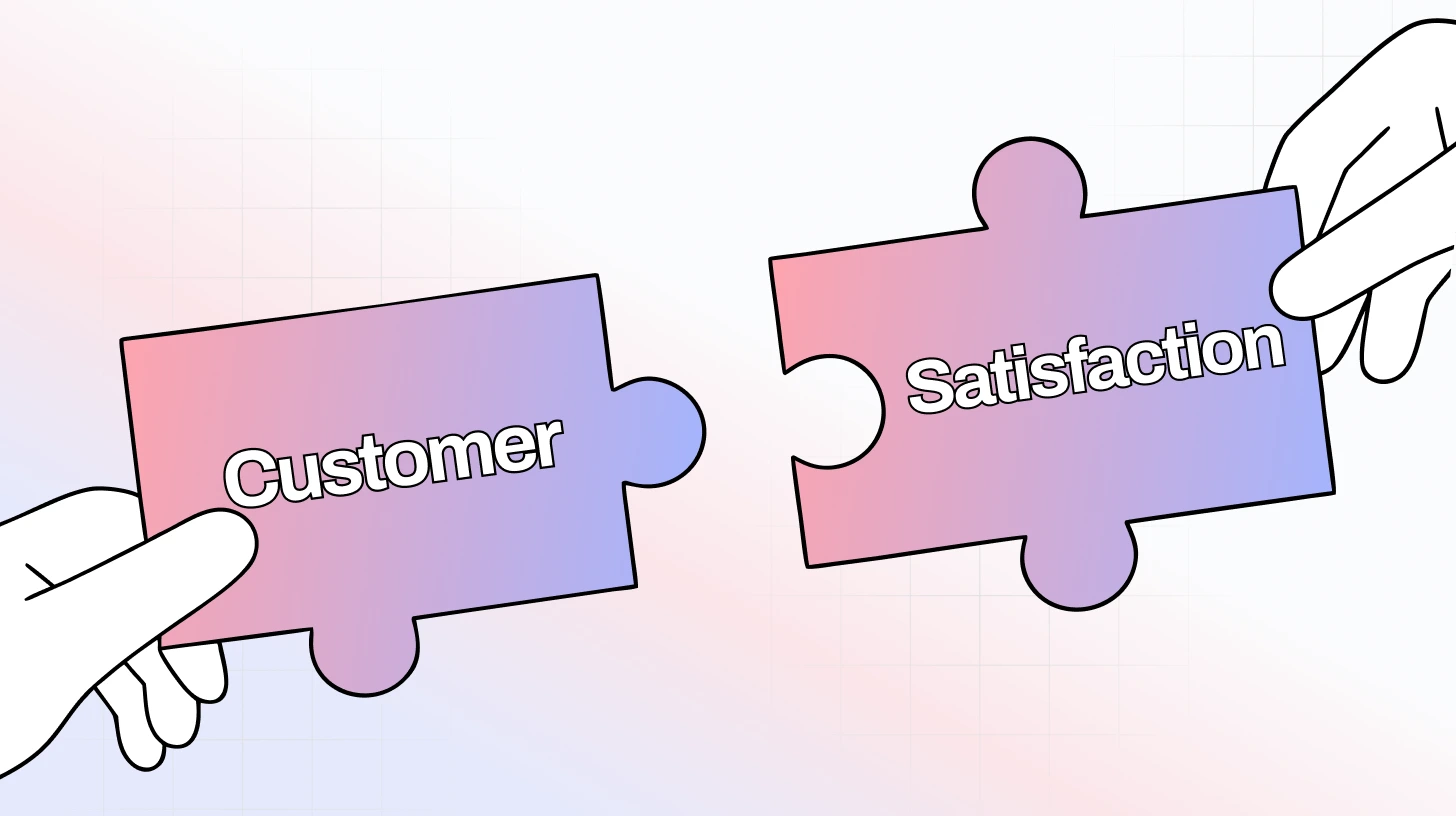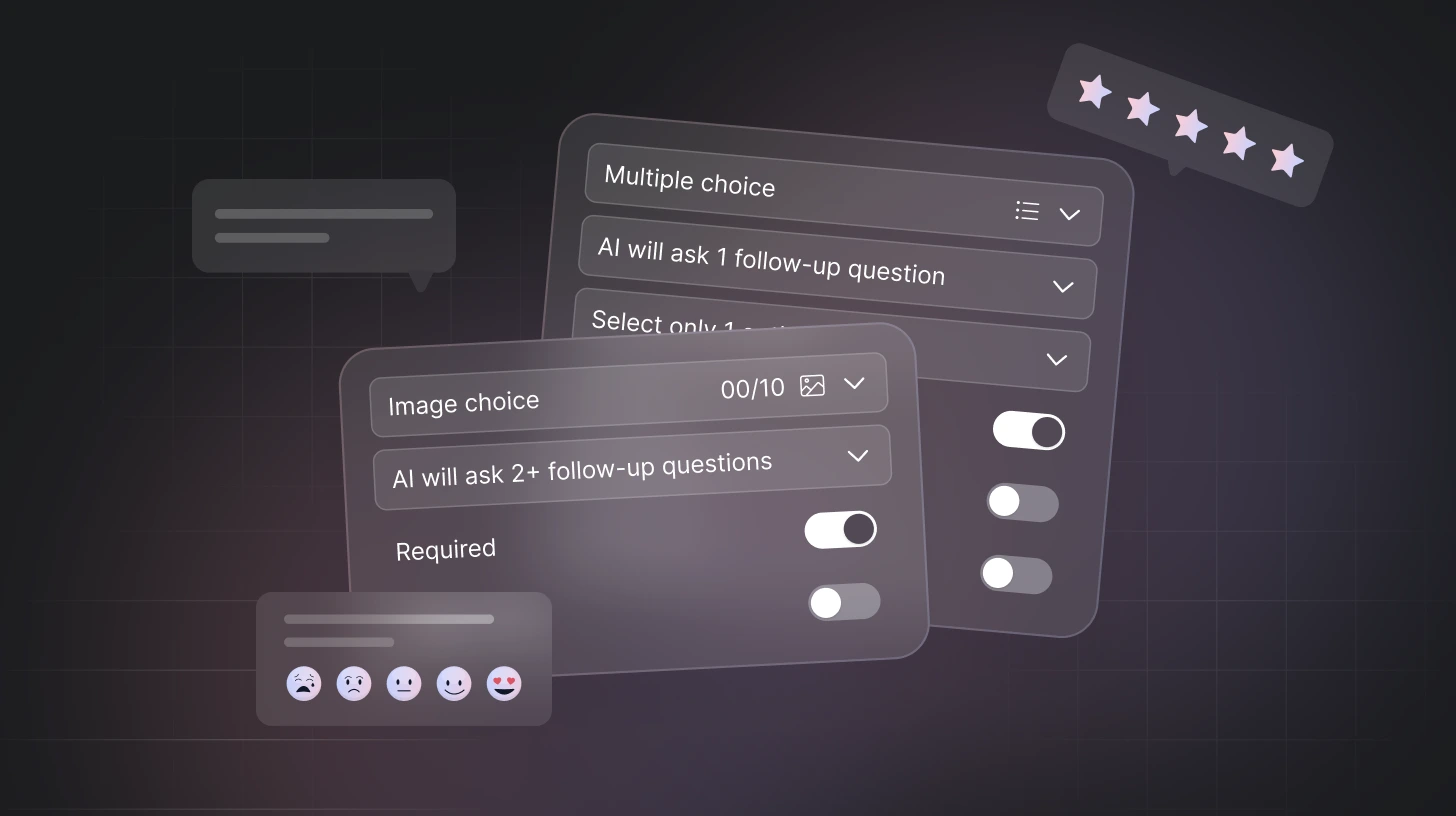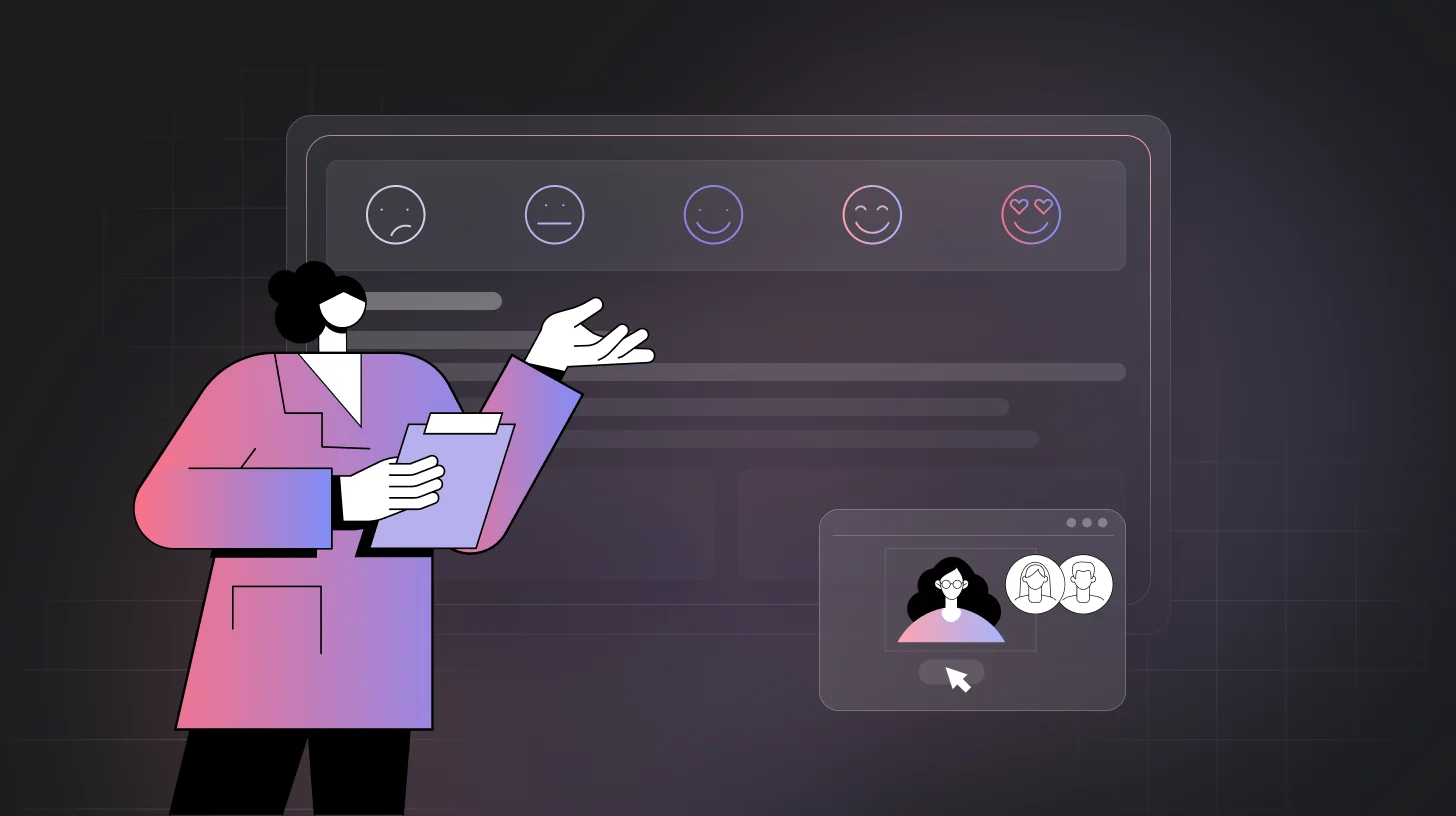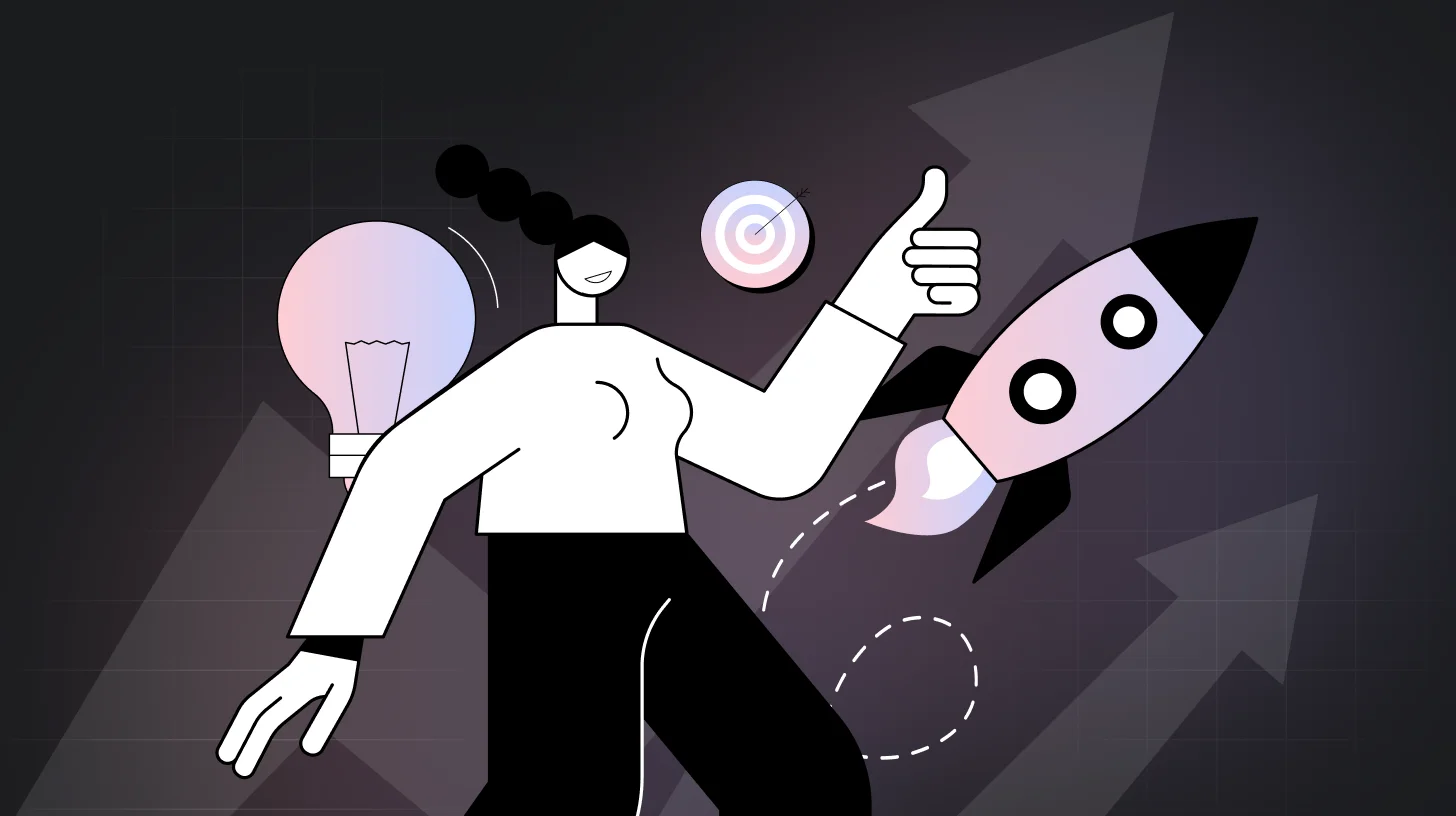 Blog
Blog What Is CSAT? Customer Satisfaction Score Explained Clearly
What Is CSAT? Customer Satisfaction Score Explained ClearlyWhat Is CSAT? Customer Satisfaction Score Explained Clearly

Losing customers hurts more than just your revenue because it also destroys your reputation. Research shows that 96% of unhappy customers never complain directly but simply vanish, often sharing their negative experiences with 9-15 other people.
That's where Customer Satisfaction Score (CSAT) becomes your early warning system.
What is CSAT? It's the metric that reveals whether your customers love, tolerate, or secretly dislike their experience with your company before they exit.
What is CSAT and Why Does It Matter?
The Customer Satisfaction Score (CSAT) is a key performance indicator that measures customer satisfaction with a specific interaction, product, or service. Unlike broader loyalty metrics, CSAT measures satisfaction at specific moments, such as after a support call, following a purchase, or during onboarding.
CSAT surveys typically ask customers to rate their satisfaction on a scale (usually 1-5 or 1-7), with responses like "Very Unsatisfied" to "Very Satisfied." The beauty lies in its simplicity: one question can reveal whether your customer experience is working or failing.
For Product Leaders and Customer Success teams at B2B SaaS companies, CSAT serves as a diagnostic tool. Moreover, CSAT shows you exactly which touchpoints create friction so you can address problems where they occur. When your CSAT scores drop after implementing a new feature, you know exactly where to focus your improvement efforts.
Understanding What is CSAT Score: The Math Behind Customer Happiness
The standard CSAT calculation transforms customer feedback into actionable data:
CSAT = (Number of Satisfied Customers ÷ Total Survey Responses) × 100
Here's how it works in practice:
You send 200 post-support surveys using a 5-point scale. You receive 120 responses, with 85 customers rating their experience as "Satisfied" (4) or "Very Satisfied" (5). Your CSAT score would be 70.8% (85 ÷ 120 × 100).
Alternative Calculation Methods
Average Score Method: Sum all ratings and divide by total responses. If those 120 responses totaled 480 points, your average would be 4.0 on a 5-point scale.
Binary Method: For thumbs-up/thumbs-down surveys, simply calculate the percentage of positive responses.
Weighted Scoring: Some companies assign different values to scale points, giving more weight to extremely satisfied customers since they're more likely to become advocates.
The key is consistency. Choose one method and stick with it to track meaningful trends over time.
When to Deploy CSAT Surveys for Maximum Impact
Timing determines the quality of your CSAT data. Deploy surveys when experiences are fresh but emotions have settled.
Post-Support Interactions
Send CSAT surveys immediately after support tickets close. This captures whether your agents resolved issues effectively and whether customers felt heard. Service quality rating depends heavily on these moments of truth.
After Key Product Interactions
Trigger in-app CSAT surveys after users complete critical workflows such as onboarding sequences, feature adoptions, or account upgrades. This real-time satisfaction tracking reveals which product areas delight or frustrate users.
Following Purchase Decisions
Post-purchase feedback surveys capture satisfaction with your buying process, pricing transparency, and initial product impressions. Deploy these 24-48 hours after purchase when the experience is memorable but initial excitement has stabilized.
Before Renewal Cycles
Send CSAT surveys 60-90 days before renewals. This timing provides enough runway to address concerns that might influence retention decisions while gathering authentic feedback from customers who've experienced your full value proposition.
What is a Good CSAT Score? Industry Benchmarks and Expectations
CSAT benchmarks vary significantly across industries, but patterns emerge when analyzing thousands of companies:
Excellent (80-100%): Top-tier performance indicating exceptional customer experience. Most customers are genuinely satisfied and likely to remain loyal.
Good (70-79%): Solid performance with room for optimization. The majority of customers have positive experiences with occasional friction points.
Average (60-69%): Acceptable but concerning. A significant portion of customers are neutral or slightly dissatisfied, creating churn risk.
Poor (Below 60%): Immediate action required. More than 40% of customers are dissatisfied, indicating systemic experience problems.
A key insight for revenue leaders: any score below 70% represents significant churn risk that demands immediate attention. Track your trajectory, not just your current position.
Industry-Specific CSAT Benchmarks
B2B SaaS companies typically see CSAT scores between 70-85%, with top performers reaching 90%+. Customer feedback tools in this space must deliver consistently high scores since switching costs are often low and alternatives are abundant.
E-commerce platforms average 75-80%, while professional services firms often achieve 80-85% due to more personalized interactions and higher-stakes engagements.
Remember: Your score relative to your historical performance matters more than industry comparisons. A company improving from 65% to 70% shows positive momentum, while one declining from 85% to 80% should investigate potential issues.
CSAT vs NPS: Understanding When Each Metric Matters
While both measure customer sentiment, CSAT and Net Promoter Score serve different strategic purposes.
CSAT focuses on immediate satisfaction with specific interactions or transactions. It answers: "Did we meet your expectations right now?" This makes it perfect for operational improvements and tactical adjustments.
NPS measures long-term loyalty and advocacy, asking: "Would you recommend us to others?" NPS predicts business growth and customer lifetime value better than CSAT.
Think of CSAT as your speedometer that shows current performance, while NPS acts like your GPS, indicating your long-term destination. Revenue-focused executives need both metrics to build sustainable growth strategies.
For tactical decisions, CSAT wins. If support ticket satisfaction drops from 85% to 75%, you know exactly which team needs attention. For strategic planning, NPS provides better insights into customer loyalty and organic growth potential.
Creating Effective Customer Satisfaction Survey Questions
The foundation of accurate CSAT measurement lies in asking the right questions at the right time. Poor question design leads to ambiguous data that wastes both customer time and business resources. Strategic question crafting transforms survey responses into precise improvement roadmaps.

Primary CSAT Questions
"How satisfied were you with [specific interaction/product/service]?"
Use this for most scenarios. It's direct, universally understood, and generates comparable data across touchpoints. This question works particularly well for post-support interactions, feature rollouts, and purchase experiences where you need standardized measurement.
"Did [Company Name] meet your expectations today?"
This variation works well for service interactions where expectations setting matters. It's especially effective for onboarding processes, consulting engagements, or any scenario where you've explicitly set customer expectations beforehand.
"How would you rate the ease of [specific process]?"
Perfect for measuring customer effort alongside satisfaction, especially for complex workflows. Use this for account setup, feature adoption, billing processes, or any multi-step customer journey where friction typically occurs.
"On a scale of 1-5, how would you rate your overall experience with [specific touchpoint]?"
This numerical approach works well for automated systems and provides clean data for statistical analysis. Ideal for high-volume touchpoints like checkout processes or basic support interactions.
Context-Specific Question Variations
For Product Features: "How satisfied are you with [Feature Name]'s performance in helping you achieve [specific outcome]?"
For Support Interactions: "How satisfied were you with the resolution of your issue?" followed by "How satisfied were you with the support process itself?"
For Onboarding Experiences: "How confident do you feel using [Product Name] after today's onboarding session?"
For Renewal Touchpoints: "Based on your experience over the past [time period], how satisfied are you with [Product/Service Name]?"
Follow-Up Questions for Context
"What's the primary reason for your rating?" (Open-ended)
This qualitative data explains the "why" behind scores, turning numbers into actionable insights. Position this as optional to maintain survey brevity while capturing rich feedback from motivated respondents.
"What could we have done differently?" (Open-ended)
Captures specific improvement opportunities directly from customers experiencing friction. This question works particularly well following lower satisfaction ratings (3 or below on a 5-point scale).
"How likely are you to use this feature/service again?" (1-10 scale)
Bridges satisfaction measurement with behavioral prediction. This helps distinguish between satisfied-but-not-engaged customers and truly loyal users.
"What was the most valuable part of your experience today?" (Open-ended)
Identifies strengths to replicate across other touchpoints. Particularly useful for understanding what drives high satisfaction scores.
"If you had to describe today's experience to a colleague, what would you say?" (Open-ended)
Captures authentic voice-of-customer language that marketing and product teams can use to improve messaging and positioning.

CSAT Survey Design Best Practices
1. Question Sequencing Strategy
Always lead with your primary CSAT question while customer experience is fresh. Follow with behavioral prediction questions, then conclude with open-ended feedback requests. This sequence maintains response quality while maximizing completion rates.
2. Scale Consistency Rules
Use identical rating scales across all surveys to enable meaningful comparison. If you start with 1-5 scales, maintain that standard across all touchpoints. Switching scales confuses customers and complicates data analysis.
3. Cultural Sensitivity Considerations
Frame questions neutrally to minimize cultural response bias. Avoid extreme language like "absolutely" or "completely" that different cultures interpret differently. Test question wording with diverse customer segments before full deployment.
4. Mobile-First Design
Ensure questions display clearly on mobile devices, where many customers will respond. Use simple language, avoid lengthy explanations, and test tap targets for easy interaction on smaller screens.
5. Progressive Disclosure Approach
Show follow-up questions only based on initial responses. If a customer rates satisfaction at 4-5, ask about advocacy. If they rate 1-2, focus on specific problems and solutions.
Advanced Question Strategies
Conditional Logic Implementation: "If you rated us 3 or below, what specific issue caused your dissatisfaction?" This targeted approach reduces survey fatigue for satisfied customers while gathering detailed feedback from those experiencing problems.
Comparative Satisfaction Measurement: "Compared to your expectations, how did today's experience rate?" This approach helps normalize responses across customers with different baseline expectations.
Outcome-Based Questions: "Did this interaction help you accomplish your goal?" This shifts focus from process satisfaction to results achievement, providing insight into actual value delivery.
Start Measuring CSAT Today
Data from customer satisfaction surveys becomes your most reliable predictor of business growth and customer retention. By tracking, analyzing, and acting on CSAT data, you transform customer feedback into competitive advantage.
Ready to implement intelligent CSAT measurement that goes beyond basic surveys? TheySaid's AI-powered platform helps you capture, analyze, and act on customer satisfaction data with unprecedented depth and speed. Transform customer feedback into strategic insights that drive retention, growth, and long-term success.
Frequently Asked Questions
Q: What is CSAT in customer service?
A: CSAT in customer service measures how satisfied customers are with specific support interactions. Unlike overall brand perception metrics, customer service CSAT focuses on individual touchpoints like support ticket resolution, agent helpfulness, or problem-solving effectiveness. It's typically measured immediately after support interactions using simple rating scales.
Q: What is a good CSAT response rate?
A: A good CSAT response rate typically ranges from 10-30%, depending on your industry and survey method. In-app surveys generally achieve the highest response rates (20-30%), followed by email surveys (10-20%), and SMS surveys (15-25%). B2B SaaS companies often see response rates on the higher end due to stronger customer relationships and higher engagement levels. Focus on optimizing survey timing and keeping surveys brief to maximize response rates.
Q: What is a good CSAT score by industry?
A: CSAT scores vary significantly across industries due to different customer expectations and service complexities. Technology and SaaS companies typically achieve 75-85% CSAT scores, while retail and e-commerce average 70-80%. Healthcare organizations often see 80-90% scores due to high-touch service models, whereas telecommunications companies average 65-75% due to service complexity.
Q: What is a good CSAT score for SaaS?
A: For SaaS companies, a good CSAT score typically ranges from 75-85%, with top-performing companies achieving 90%+. SaaS CSAT benchmarks are generally higher than other industries because customers have chosen to pay for ongoing subscriptions, indicating baseline satisfaction. Scores below 70% suggest significant customer experience issues that could impact retention, while scores above 85% indicate strong product-market fit and excellent customer success operations.















.svg)